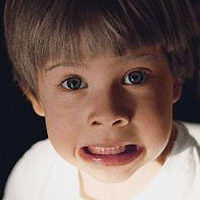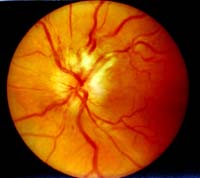Do not ignore muscle twitching. After all, involuntary reductions in muscle fibers (they are called hyperkinesov) may indicate serious pathology. If hyperkinesis causes pain and lasts longer than three months, - can certainly visit the doctor. More about hyperkinases you will learn from this article.
Content
Tiki is involuntary, often repeated face muscles twitching (flashing, arms of forehead, nose, mouth opening, lip twitching, cheeks and t. D.), articulation and respiratory muscles (type sounds «kh», camping, shaking, flavored, heavy sighs, intermittent, resembling SPI spending and t. e). Involuntary reductions in other muscles, mainly neck and torso, more pronounced in amplitude and less frequent, like a shaking head, shuddering by the body, twitching the limbs and T. D. Indicatically as hyperknesia.
 Although adult people may have teaks, in most cases they appear in children aged about 6 years. Indeed, according to doctors, approximately 10% of children have teaks. Often, teaks are enhanced as the period of puberty approaches and gradually decrease with age. In adults, ticks usually continue no more than one year.
Although adult people may have teaks, in most cases they appear in children aged about 6 years. Indeed, according to doctors, approximately 10% of children have teaks. Often, teaks are enhanced as the period of puberty approaches and gradually decrease with age. In adults, ticks usually continue no more than one year.
Often, ticks and hypercines are regarded by adults as grimaces, deliberate crying and balobiness. Therefore, they are trying continuous comments, prohibitions or punishments to eliminate them. But if a child can delay ticks (or hypercinesis) for a while, then they are renewed with greater force. Moreover, the conscious delay of ticks is far from indifferent and turns into a sharp increase in internal stress, manifested by headaches, irritability and aggressiveness.
The thing is that ticks are the final link of a complex painful process. An important role in it belongs to the hereditary transmission of increased neuro-muscular excitability and excessive sharpness of movements (impulsivity) from the father, which, as a rule, were also ticks in childhood. You can even say that ticks in their transfer are purely «male» The type of pathology, although they may appear in girls, especially those who are like fathers. Often, then these girls are much larger and higher peers, t.E. They have an advanced age of physical development while at the same time insufficient coordination of motion, overall awkwardness and stiffness. These girls can enjoy both phlegmatic and choleric temperament features. In the latter case, we do not differ weighing and increasing from peers.
More often than girls, ticks are observed in boys, primarily at choleric temperament features, as well as those who lag behind the growth and physical development from peers. Despite the mobility, these boys also detects insufficient coordination of movements.
Another factor directly contributes to the appearance of teaks will be internal voltage or excitability, which accumulate gradually, from the inside and, for various reasons, cannot be expressed externally,.E. Reagreed. Sources of internal, painfully pointed voltage are diverse and belong to the organically damaging brain factors (asphyxia in childbirth, inflammation, injury or concussion), neuropathy and neurosis. Often, these sources are combined with each other, and the allocation of the leading role of one of them is produced on the basis of a number of restrictive features.
Tiki, or, more precisely, ticoid hyperkers arising on the basis of residual cerebral organic failure (other names - minimal brain dysfunction, hyperactivity syndrome, attention deficit syndrome) are distinguished by a stubborn flow that is little dependent on the actions of external, situational or psychological factors. Most of all the relationship of teaks with unreasoned excitation, especially in hyperactive, mentally and engine-excited and often defective children.
Ticks on the basis of neuropathy are less stable, depend on the action of climatic, weather factors, including stuffiness, heat, changes of barometric pressure; Strengthen in the situation of increased sound background, bright light, flashes before eyes (especially when watching TV shows). Characteristic and increasing ticks during fatigue, which indicates the unbearability, weakening of the body. This usually takes place after a long or frequent somatic and infectious diseases, indicating insufficiently reliable protective forces of the body.
Tiki arising from neurosis is largely due to the action of psychological factors, and first of all concern. Promotes all sorts of unrest related to the unusual situation of communication, expectations of something, fright or internal contradictions and conflict. But this does not mean that ticks in neurosis are exceptionally functional in nature, since a psychogenic factor can lead to an increase in the underlying cerebral-organic, or constitutional-neuropathic, insufficiency.
If ticks during organic violations, as already noted, are due to excitation, in neuropathy - overwork, ticks for neurosis are primarily connected with concern, anxiety and fear, and then with overwork and excitation.
This confirms the dynamics of the mental state in neurosis due to psychological impact on ticks. Their decrease or temporary cessation under the influence of suggestion or hypnosis is accompanied by an increase in excitability, as well as increasing motor activity. This indicates that ticks are an additional, albeit the pathological form of psychomotor discharge, reacting the accumulated and painful recycled internal voltage.
In addition to emotional sensitivity and varying, children subject to ticks differ from peers internal characteristic of emotion processing - impressiveness. Possessing and highly impressionable and developed long-term memory, they do not disclose their experiences before those who envoys, they do not share them, and only close can guess what is happening in their soul. They do not identify and high society, limited to a narrow circle of contacts and the familiar, already established relations. Inherent in them and increased pride, self-esteem, underlined sensitivity to praise and censures, estimates and attitude to them from other people. These children are stubborn and persistent in the exercise of the goal and is often regarded by others as stubborn, proud and non-conscription. At the same time, they are prone to sharp actions and can not stand anything for a long time, waiting always excited, do not find themselves and calm down only at any occupation. Similar impulsiveness and impatience - reflection of their choleric temperament, especially in boys. To some extent anxiety, developing into anxiety, is the expression of emotional problems of development and conflicts in the family.
A frequent source of anxiety in a senior preschool age is the fear of death, underlined by various kinds of threats for life: accidents, operations and diseases. Another reason for anxiety lies in involuntary transmission (induction) of excitement from parents and especially grandparents, not tolerance, waiting, extremely restless and foresight, seeking to patron children, regulate their lifestyle, control the activity and expression of feelings and protect against Imaginary dangers. Then anxiety - the consequence of the fact that the child cannot be himself.
Common for parents whose children are subject to ticks, there will be a complex of hypersocialized character traits: increased principle, extended sense of debt, commitment, not always justified perseverance and perseverance in defending their opinion in combination with uncompromising and excessive categoricalness of judgments. A similar type of character is closest to the character of type people described in the psychological literature «BUT»: emphasized ambitious and active career, recognition and position in society, feel chronic time deficit and not paying attention to their emotional problems. They, experiencing a strong head of desires and aspirations, are in a state of constant internal stress and a rush, cannot relax and usually pay for these headaches and cardiovascular pathology.
Fathers are especially annoying «Insuitableness» sons, absence, in their opinion, due resourcefulness and intelligence, as well as the fact that they are excessively emotional, sensitive and impressionable and also kind and foul. More sobriety, calculation, rationalism with maximum stubborn feelings - this is the credo of these fathers, to whom they sometimes persistently follow, Pedantically predetermining habits, interests and lifestyle of their children.
In combination with disadvantage of movements, frequent restrictions and prohibitions, such a ratio of parents contributes to the emergence of intolerable internal stress as an explosive mixture of concerns and excitability. I spark smelting this mental mixture, there may be any additional psycho-traumatic and somatic weakening factor. Painful overvoltage and excitation of emotionally regulating, and then motor, still not enough rapid functional areas of the brain spreads through the reflex pathways to the muscles, as the place of least resistance, and manifests itself in the form of their involuntary twitching - Tikov. In other words, ticks for neurosis are psychomotor discharges internal, mostly psychologically motivated, voltage.
In all cases, children with ticks not only can not wait, but also do a lot in advance, no matter how anticipating the unpleasant development of events, failures and mistakes, it is extremely difficult to carry a collision with difficulties and obstacles in their path. To a large extent, this is a consequence of the contradictory development of their personality, the presence of contrasting, difficult-to-educational parties in it: emotionality and not on the childish-developed rationalization of feelings and desires; impressive expression of feelings and choleric temperament; pronounced pride, feelings «I», head of feelings and desires and the lack of self-confidence, inconsistency.
Other relatively rare teak reasons include diseases of the thyroid gland, schizophrenia, brain damage and abuse of some stimulating drugs.
Tiki - a very difficult phenomenon and fight them is almost impossible. Initially, it is necessary to determine the original, often hidden by neurotic and other pathology temperament of the child, then find sources of its nervousness, on the basis of which ticks arise, and treat it with all available ways. If we are dealing with ticks on the basis of organic violations or neuropathy, then a large role here should be withdrawn by drug and generalifying treatment. If we are talking about ticks in neurosis, it is necessary to treat neurosis and use for this mainly medical pedagogical and psychotherapeutic effects. It is necessary and to carry out appropriate explanatory work with parents with the aim of changing their improper perception of ticks as promptness, balobiness or stubbornness and, if possible, correction of their unnecessarily intense, and often conflict relations with children.
It should be remembered about the likelihood of psychological infection by teaks as a result of involuntary imitation of some increased inspired and impressionable children. It happens only in the process of direct communication and subject to the famous authority of the child with tics among peers. Induced ticks are easily removed by suggestion, but it is necessary to do it carefully, remembering the possibility of subsequent, increasing excitability. So that this does not happen, you need to provide additional opportunities for emotional and physical discharges with ticks, play with them in mobile, expressively saturated games. Ball, jump rope, running, jumping, overcoming obstacles, climbing and t.D. help no less, or even more than other types of assistance to children with teaks. The same recommendations can be given to parents in terms of development in children not only activity, but also dexterity, and coordination of movements. No need to be afraid of temporary excitement of children when playing and even strengthening ticks, as some parents consider. With regularly conducted games and classes, the physical culture of excitability gradually decreases and teaks disappear as the child strengthened.
It is desirable to limit the use of sweet. A certain number of parents report that under the influence of caffeine and sugar rafinad there is an increase in ticks from their children. Since neither sugar nor caffeine is among the vital products, it is better to refrain from their use.
Most people with temporary ticks usually get rid of them. These states often pass in a year and do not represent such a danger as turret syndrome, but with the help of drugs such as haloperidol and pimozide, can be kept under the control of hypercines and with this disease. However, side effects are possible in the form of drowsiness, tremors in hand and depression.









